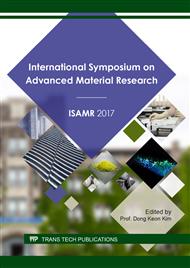p.285
p.290
p.295
p.300
p.305
p.310
p.315
p.321
p.326
Study on Welding Deformation and Residual Stress of H-Section Beam Based on Finite Element Method
Abstract:
The welding H-section beam has good mechanical properties with its superior structure. So they become the main components of steel structure and have been widely used. In this paper, the welded H-section beam is used as the research object. The finite element simulation model is established. The heat source parameters are determined. The deformation of the steel due to the welding process is studied. The results show that the bottom plate and the bottom plate inward bending is about 2.32mm cause by welding process. The residual stress can reach 400MPa.
Info:
Periodical:
Pages:
305-309
Citation:
Online since:
August 2017
Authors:
Price:
Сopyright:
© 2017 Trans Tech Publications Ltd. All Rights Reserved
Share:
Citation:


